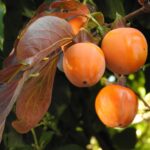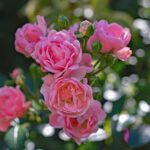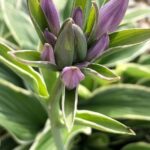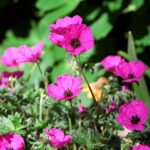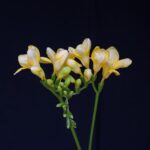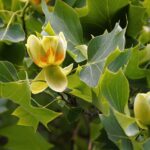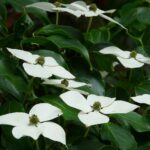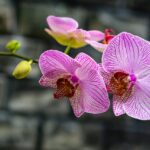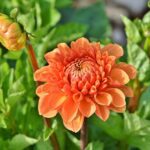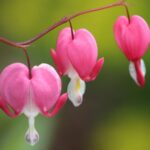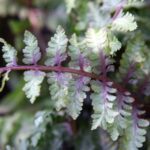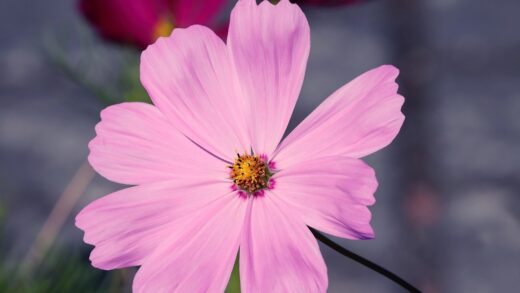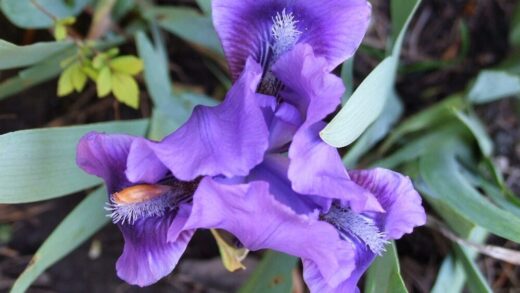The gerbera, a stunning flowering plant native to South Africa, enjoys immense popularity among both gardeners and flower enthusiasts. However, for it to display its full splendor, understanding and providing optimal light conditions are paramount. Light serves not only as an energy source for the plant but also plays a crucial role in its growth, developmental, and flowering processes. Without sufficient and appropriate quality light, the gerbera cannot develop healthily, and its flowers will either be absent or of poor quality. Therefore, every professional and hobbyist involved in gerbera cultivation must be familiar with the specific light requirements of this plant.
Photosynthesis, the biochemical process by which plants convert light energy into chemical energy, is intrinsically linked to the presence of light in gerbera. This process occurs in the chlorophyll molecules within the leaves, where carbon dioxide and water are transformed into sugars—essential nutrients for the plant. The quantity and quality of light directly influence the efficiency of photosynthesis; under unfavorable light conditions, the process slows down, leading to a decline in the plant’s overall vitality. Consequently, gerbera growth may be retarded, its leaves may turn pale, and its general resistance to various pathogens and pests can diminish. Adequate light supply is thus indispensable for continuous and balanced development.
Light plays a prominent role in the flower formation of gerbera and in the quality of the blooms themselves. Appropriate light intensity and duration stimulate the development of flower buds and contribute to the strength of flower stems and the vibrant color of the petals. If the gerbera does not receive enough light, flowering may be inhibited, the number of flowers formed may decrease, their size may be smaller, and their color may be paler. Conversely, exposure to excessively strong, direct sunlight can cause burns on the leaves and flowers, which also diminishes the aesthetic value and health of the plant. Therefore, finding a balance is crucial for optimal flower production.
The duration of light, or photoperiod, is also a determining factor in the gerbera’s developmental cycle. Although gerbera is generally considered a day-neutral plant, meaning it does not require a specific day or night length to flower, some research suggests that long days—light periods exceeding 12-14 hours daily—can promote more abundant and faster flowering. In cultivation, the timing and quantity of flowering can be influenced by artificially regulating the photoperiod. The light requirements may vary slightly during different developmental stages, from vegetative growth through flower induction to flower development, a factor that professional growers take into account.
Natural Light Conditions and Gerbera
The gerbera’s native habitat is South Africa, where it typically occurs in open, sun-drenched grasslands, savannas, and mountainous meadows. In these areas, the plant receives abundant natural light, which fundamentally defines its ecological needs. Throughout its evolution, the gerbera has adapted to these intense light conditions, a fact reflected in its leaf structure and overall plant habit. The high levels of light in its natural environment provide the necessary energy for robust growth and the production of its spectacular flowers. Consequently, in cultivation, one should aim for similarly high light availability.
More articles on this topic
In its natural environment, the gerbera can adapt to varying light intensities to a certain extent. For instance, under stronger sunlight, leaf orientation may alter slightly to reduce excessive heat absorption and water loss. Additionally, certain physiological mechanisms aid the plant in more efficiently processing light energy or in avoiding light-induced damage. These adaptive capabilities allow the gerbera to thrive across a broader range of distribution, although it consistently shows optimal development under abundant, yet not scorching, sunlight. These adaptive limits must also be considered during cultivation.
Seasonal changes in the quantity and quality of natural light also influence the life cycle of wild gerberas. During the rainier, growing season, when light conditions are favorable, the plant actively grows and flowers. In drier, possibly cooler periods, when light intensity or day length may decrease, the plant’s growth may slow, or it might even enter a dormant state. These natural cycles ensure the plant’s survival and regeneration. In cultivation, the goal is often continuous flowering, which frequently necessitates artificially bypassing these natural cycles.
The microclimate, meaning the specific environmental conditions prevailing within a smaller, localized area, can also significantly impact the amount of light available to a gerbera. For example, an individual plant growing in the shade of a rock or under the cover of larger plants will receive less direct light than its counterparts in a completely open area. This can affect the individual’s size, flowering propensity, and overall condition. These microhabitat differences, which influence light, soil moisture, and temperature, contribute to the diversity of wild gerbera populations.
The Optimal Level of Light Intensity
Light intensity, or the amount of light energy per unit area, is a critical factor in the successful cultivation of gerberas. This quantity is often measured in lux or, for Photosynthetically Active Radiation (PAR), in micromoles per square meter per second (μmol⋅m−2⋅s−1). Gerbera generally requires high light intensity; the optimal value can vary depending on the cultivation phase, but it can generally be stated that vegetative growth requires at least 15,000-20,000 lux, while abundant flowering may necessitate even higher values, up to 25,000-35,000 lux (approximately 400−600μmol⋅m−2⋅s−1 PPFD). Levels below this can compromise the plant’s development and flowering capacity.
More articles on this topic
Low light intensity can have numerous negative consequences for gerbera. Under such conditions, the plant is prone to elongation, or etiolation, where stems become weak and thin, and leaves may be larger but paler green or yellowish (chlorotic) due to reduced chlorophyll production. Flowering significantly declines, the number of buds decreases, or flowering may be entirely absent. Furthermore, weak, under-lit plants become more susceptible to various fungal and bacterial diseases as their natural defense mechanisms are also weakened. High air humidity in such conditions can further exacerbate the situation.
Excessively high light intensity, especially if the plant is suddenly exposed to it or if it is coupled with extreme temperatures, can also be detrimental. The most common symptom is leaf burn, appearing as scorched, brown, dry patches on leaf margins or surfaces. In severe cases, the photosynthetic apparatus can be damaged (photoinhibition), leading to a decrease in photosynthetic efficiency. The plant may enter a stressed state, flower color may fade, and their lifespan may shorten. It is important to note that high light intensity is also accompanied by increased transpiration, so the plant’s water requirement increases, and if this is not compensated, desiccation can occur.
Measuring light intensity is possible with specialized instruments such as a lux meter or a quantum sensor (PPFD meter). These tools allow growers to get an accurate picture of the amount of light reaching the plants and to make corrections if necessary. If such instruments are not available, observation of the plants can also provide clues: dark green, compact growth and abundant flowering usually indicate adequate light conditions, whereas the aforementioned deficiency symptoms or signs of burning signal the need to optimize light conditions. Practical experience and careful monitoring of plant responses are essential.
The Role of Photoperiod
Photoperiodism is the ability of plants to respond to periodic changes in the length of day and night with physiological responses, most commonly related to flower induction. Regarding its flowering tendency, gerbera is often described as a quantitative long-day plant (LDP) or, by another approach, as a day-neutral plant whose flowering is promoted by long days. This means that although it can flower under shorter light periods, the intensity, speed, and number of flowers significantly improve if daily illumination exceeds 12-14 hours. Flower quality may also be better under longer photoperiods.
The photoperiod directly influences the balance between vegetative and generative development in gerbera. Under short-day conditions, especially if light intensity is also low, the plant may be more inclined to increase vegetative mass, meaning it develops more leaves and shoots at the expense of flowers. Conversely, under long days, the plant’s hormonal balance shifts towards generative development, favoring the formation of flower buds and the development of flowers. This characteristic allows growers to time and maximize flower yield by regulating the photoperiod.
In commercial gerbera production, artificial manipulation of the photoperiod is widely used, especially during the autumn and winter months when the length of natural days decreases. During these times, supplemental lighting is used to extend the daylight period, or the dark period of the night is interrupted with short light pulses to keep the plants under “long-day” conditions. This ensures a year-round, continuous supply of flowers. The timing and duration of supplemental lighting require precise planning to achieve the desired effect and to optimize energy costs.
It is important to understand that the effects of photoperiod and light intensity are not independent; they are in close interaction. Providing a long photoperiod is futile if the light intensity is too low, as flowering will not be optimal because the plant lacks sufficient energy for abundant flower production. Ideally, long days are paired with high light intensity. Therefore, when developing cultivation technology, both factors must be considered and optimized совокупности (together) according to the gerbera’s needs to achieve the best possible quality and quantity of flowers.
The Application of Artificial Lighting
The application of artificial lighting in gerbera cultivation becomes necessary when natural light conditions are insufficient for the plant’s optimal development and flowering. This is particularly true in temperate regions during the autumn and winter months, when days are short and light intensity is low. In greenhouses and indoor growing facilities, artificial light sources allow for the extension of the growing season and even year-round continuous production. The purpose of supplemental lighting can be to increase the Daily Light Integral (DLI) or to regulate the photoperiod.
Various types of artificial light sources are available, each with different characteristics and efficiencies for gerberas. High-Pressure Sodium (HPS) lamps have long been used for their high light output and a spectrum conducive to flowering, although they also generate significant heat. Modern LED (Light Emitting Diode) technology is becoming increasingly popular due to its energy efficiency, long lifespan, lower heat emission, and the ability to customize the spectrum. Fluorescent lamps, especially versions with a spectrum optimized for plant growth, can be suitable for raising seedlings or for supplementary lighting of smaller crops.
The spectral composition of artificial light sources is critically important for plant development. Gerberas, like most green plants, primarily utilize blue (approximately 400-500 nm) and red (approximately 600-700 nm) wavelength light for photosynthesis. Blue light promotes compact growth and leaf development, while red light plays a key role in flowering and stem elongation. The ratio of far-red light to red light can also influence flower induction and plant morphology. LED technology allows for the precise combination of different wavelengths according to the specific needs of the gerbera.
Practical aspects of using artificial lighting include the proper placement of lamps above the crop to ensure uniform light distribution, and the regulation of lighting duration and intensity. Timer switches can automate the process. Investment and operational costs must also be considered to ensure that supplemental lighting is economically viable. Avoiding scorching from excessive proximity and gradually acclimatizing plants to new light conditions are also important aspects of successful application.
Symptoms and Management of Light Deficiency and Excess
Improper light conditions, whether deficiency or excess, cause characteristic symptoms in gerbera, the timely recognition and management of which are essential for maintaining plant health. The most obvious signs of light deficiency include elongated, etiolated growth, where stems become thin and weak, and internodes (the spaces between leaves) lengthen more than normal. Leaf color may turn pale green or yellowish (chlorotic) due to reduced chlorophyll content, and their size may remain smaller, or conversely, the plant may try to compensate for the lack of light with a larger leaf surface. Flowering significantly decreases, the number and size of flowers fall short of expectations, and buds often drop or fail to open at all.
The primary step in managing light deficiency is to move the plant to a brighter location where it receives more indirect or filtered sunlight. If this is not possible, or if natural light is still insufficient, the application of artificial supplemental lighting with grow lamps may become necessary. It is important to gradually accustom the plant to stronger light to avoid stress caused by sudden change and leaf burn. In greenhouse cultivation, keeping glass surfaces clean can also improve the amount of incoming light. For outdoor cultivation, appropriate pruning of surrounding, shading vegetation can help.
Excessive light, especially sudden and strong direct sunlight, can also cause detrimental symptoms on gerberas. The most common is leaf scorch, which appears as brown, dry, necrotic spots on the leaf margins or surface where sunlight was most intense. Leaf color may fade, turning yellowish-white, and flower petals may burn or lose their vibrant color. In severe cases, the plant may begin to wilt despite moist soil, as the rate of transpiration exceeds water uptake, and the plant overheats. Growth may slow, and the plant can become stunted and hardened in habit.
To prevent and manage problems caused by excess light, shading is recommended, especially during the midday, hottest hours. In greenhouses, shade cloths or lime washing can be used, while for potted plants, moving them to a bright but direct-sun-protected location can be a solution. Ensuring good air circulation and ventilation helps to cool the leaves and reduces the risk of scorching. Regular watering, adjusted for increased transpiration, is also important to keep the plant’s water balance stable. It may be beneficial to choose gerbera varieties that are more tolerant of intense sunlight if cultivation conditions warrant it.



